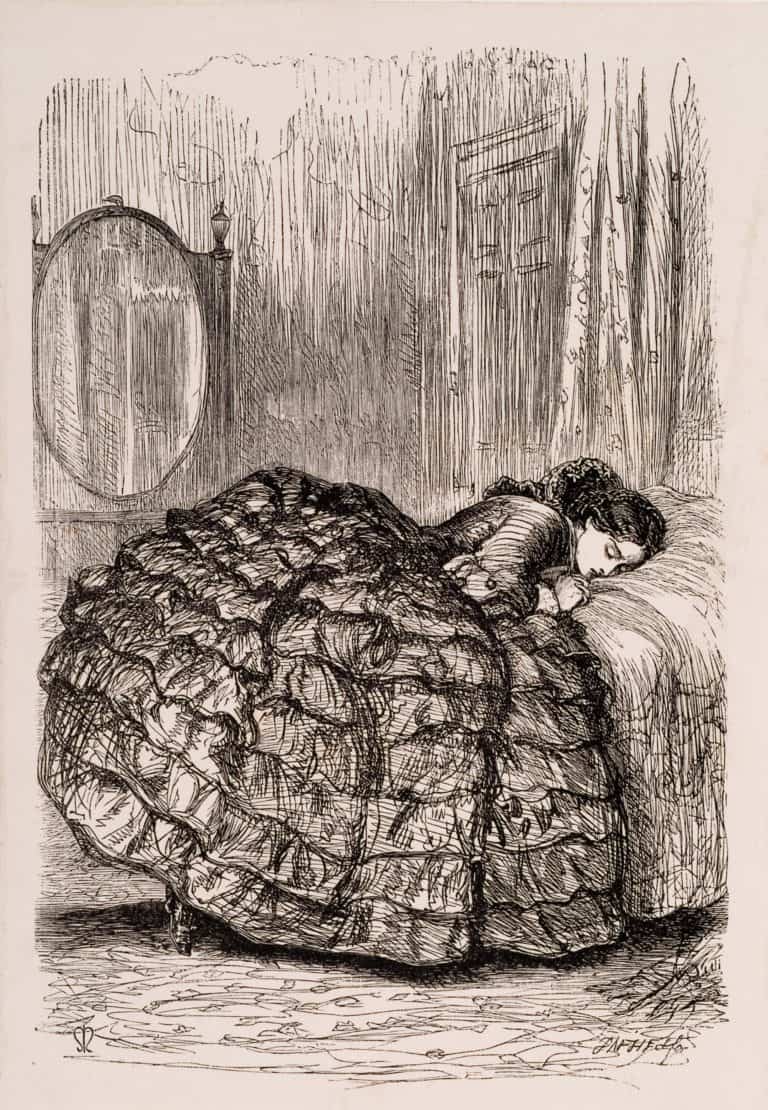What it Feels Like to Have OCD: A Look Inside the Mind

Imagine being trapped in a maze of your own mind, where every turn leads to another obsessive thought and every step requires a ritualistic action to quell the anxiety. This is just a glimpse into the bewildering world of Obsessive-Compulsive Disorder (OCD).
In this blog post, we embark on a journey to unravel the intricacies of OCD by delving into personal narratives and real-life experiences.
From the haunting obsessions to the exhausting compulsions, we’ll uncover what it feels like to have OCD. Join us as we navigate through the labyrinth of the mind and gain insight into the unique challenges faced by individuals living with OCD.
Defining OCD
Obsessive-Compulsive Disorder (OCD) is a mental health condition characterized by intrusive, repetitive thoughts (obsessions) and repetitive behaviors or mental acts (compulsions) performed in response to these thoughts.
These obsessions and compulsions can significantly interfere with daily life, causing distress, anxiety, and disruption in various aspects such as work, relationships, and personal well-being.
Prevalence of OCD
OCD is more common than many people realize. According to the World Health Organization (WHO), OCD affects approximately 2% of the global population, making it one of the most prevalent mental health disorders worldwide.
In the United States alone, it’s estimated that over 2 million adults struggle with OCD each year. Furthermore, OCD can manifest at any age, but it often begins during childhood or adolescence.
It is not yet known why OCD develops, however research suggests that it’s a combination of genetic, chemical brain imbalances and environmental (traumatic or stressful events) aspects.
In fact, research has shown that, Stressful life events – People who have experienced traumatic or stressful events may have an increased risk of developing OCD.
Beyond Neatness
Contrary to common misconceptions, OCD is not simply a desire for neatness or orderliness. While some individuals with OCD may exhibit compulsions related to cleanliness or organization, the disorder encompasses a much broader range of obsessions and compulsions.
These can include intrusive thoughts about harm, losing control, contamination, or even taboo subjects, along with compulsions that may seem illogical or unrelated to the obsession.
OCD is a complex mental health condition that goes far beyond surface-level behaviors, impacting individuals in profound and often debilitating ways. Understanding this complexity is crucial in providing support and empathy to those affected by OCD.
The Intrusive Nature of Obsessive Thoughts
Obsessive thoughts are like uninvited guests that refuse to leave, constantly intruding upon the mind with their relentless presence.
They can take many forms, from fears of contamination to worries about harming oneself or others. These thoughts often feel irrational and out of control, dominating one’s consciousness and overshadowing even the most mundane tasks.
For people with OCD, it’s as if their own minds have become battlegrounds, with obsessions relentlessly bombarding them from all angles.
Intense Anxiety and Distress
The presence of obsessive thoughts brings about an overwhelming sense of anxiety and distress. Imagine living in a perpetual state of fear, where every thought is accompanied by a sense of impending doom.
Individuals with OCD may experience heightened levels of stress and tension as they struggle to cope with the barrage of intrusive thoughts.
These thoughts can evoke intense emotions such as guilt, shame, and panic, further exacerbating the distressing cycle of OCD.
Compulsive Behaviors as Temporary Relief
In an attempt to alleviate the anxiety triggered by obsessive thoughts, individuals with OCD often engage in compulsive behavior or rituals.
These behaviors may include repetitive actions such as washing, checking, or counting, performed in a rigid and ritualistic manner.
While these compulsions provide temporary relief from the anxiety, they ultimately reinforce the cycle of OCD by validating the belief that performing the ritual is necessary to prevent harm or alleviate distress.
Thus, individuals find themselves trapped in a vicious cycle, where the temporary relief provided by compulsions only serves to perpetuate the disorder in the long run.
Manifestation of OCD Through Physical Rituals
OCD often manifests physically through the performance of repetitive actions or rituals, known as compulsions. These compulsions can take various forms, depending on the individual’s specific obsessions and coping mechanisms.
For example, someone who experiences obsessive fears of contamination may engage in excessive hand-washing or cleaning rituals.
Others may feel compelled to check and recheck locks or appliances to ensure safety, while some may engage in repetitive counting or tapping behaviors to alleviate anxiety.
These physical rituals serve as attempts to gain a sense of control over the intrusive thoughts and the distress they cause.
Exhaustion and Time-Consuming Nature
Engaging in compulsive behaviors can be incredibly exhausting and time-consuming for individuals with OCD. Imagine spending hours each day performing rituals or routines, only to find temporary relief from the anxiety before it returns with even greater intensity.
The relentless cycle of obsession and compulsion can consume vast amounts of time and energy, leaving individuals drained both physically and emotionally.
Additionally, the need to perform rituals can interfere with daily responsibilities such as work, school, or social activities, further exacerbating feelings of frustration and isolation.
Moreover, the physical toll of OCD extends beyond just the act of performing compulsions. The constant tension and stress associated with the disorder can lead to headaches, muscle tension, and other physical symptoms.
Additionally, sleep disturbances are common among individuals with OCD, as the anxiety and intrusive thoughts often intrude upon their ability to rest peacefully. Thus, the physical manifestations of OCD serve as poignant reminders of the profound impact the disorder can have on both mind and body.
Constant Battle Between Rational Thoughts and Irrational Obsessions
Inside the mind of someone with OCD, there exists a perpetual struggle between rational thoughts and irrational obsessions. Rational thoughts are grounded in logic and reason, while obsessions are intrusive, irrational, and often fueled by fear or anxiety.
Despite knowing that their obsessions are irrational, individuals with Obsessive Compulsive Disorder find themselves unable to shake off the accompanying anxiety and distress.
This creates a relentless tug-of-war within their minds, where rationality is pitted against the overwhelming force of obsessive thoughts.
Cognitive Distortions and Thinking Patterns

Individuals with OCD commonly experience cognitive distortions, which are exaggerated or irrational thought patterns that contribute to the intensity of their obsessions and compulsions. These distortions may include:
Catastrophizing: Exaggerating the potential consequences of a situation, leading to heightened anxiety and fear.
All-or-Nothing Thinking: Viewing situations in extreme, black-and-white terms, without considering shades of gray or middle ground.
Mind Reading: Assuming that others can perceive their intrusive thoughts or judge them for their obsessions, leading to social anxiety and isolation.
Overestimation of Threat: Magnifying the likelihood or severity of negative outcomes associated with their obsessions, fueling the need to engage in compulsive behaviors as a means of prevention.
These cognitive distortions contribute to the perpetuation of OCD symptoms by reinforcing irrational beliefs and justifying compulsive behaviors as necessary for managing anxiety.
Breaking free from these distorted thinking patterns is a significant challenge for individuals with OCD, requiring ongoing cognitive-behavioral therapy and coping strategies to challenge and reframe their obsessive thoughts.
Insights into Daily Challenges
For individuals with Obsessive Compulsive Disorder, each day presents a series of challenges intertwined with the relentless cycle of obsessions and compulsions.
Simple tasks like getting dressed or leaving the house can become monumental feats as they navigate the intrusive thoughts and rituals that accompany them.
The constant need to perform compulsions can consume valuable time and energy, making it difficult to focus on other responsibilities or pursue personal interests.
Impact on Various Aspects of Life
OCD casts a wide-reaching shadow over every aspect of life, from work and relationships to self-esteem and overall well-being. In the workplace, individuals with OCD may struggle with concentration and productivity due to the intrusive thoughts and rituals that demand their attention.
Relationships may suffer as the demands of OCD strain communication and intimacy, leading to feelings of isolation and misunderstanding.
Moreover, the relentless pursuit of perfection and the fear of judgment can take a toll on self-esteem, perpetuating a cycle of shame and self-doubt.
Anecdotes and Experiences
Contributors share diverse perspectives on the day-to-day realities of living with OCD.
Some recount the frustration of being unable to complete tasks without performing rituals, while others reflect on the toll OCD has taken on their relationships and sense of self-worth.
Each anecdote offers a glimpse into the unique challenges faced by individuals with OCD and underscores the importance of empathy and understanding in supporting those affected by the disorder.
Through sharing their experiences, contributors shed light on the complexities of OCD and the resilience of those who navigate its challenges daily.
Coping Mechanisms for Managing OCD

Exposure and Response Prevention (ERP)
ERP is a cornerstone of cognitive-behavioural therapy (CBT) for OCD and other mental health disorders such as anxiety disorder and body dysmorphic disorder.
It involves gradually exposing oneself to situations or triggers that provoke obsessions, while refraining from engaging in compulsive behaviors.
Over time, individuals learn to tolerate the anxiety triggered by their obsessions without resorting to rituals, ultimately reducing the power of OCD over their lives. ERP therapy is best used with the guidance of a mental health professional.
Mindfulness and Acceptance
Mindfulness practices encourage individuals to observe their thoughts and feelings without judgment, allowing them to develop a greater sense of awareness and acceptance of their experiences.
By learning to tolerate uncertainty and discomfort, individuals can cultivate resilience in the face of OCD symptoms.
Self-Care and Stress Management
Engaging in activities that promote relaxation and well-being can help individuals cope with the stress and anxiety associated with OCD.
This may include regular exercise, adequate sleep, healthy eating habits, and activities such as yoga or meditation.
Support Networks
Building a strong support network of friends, family, or support groups can provide individuals with valuable emotional support and encouragement
Connecting with others who understand their experiences can reduce feelings of isolation and stigma, fostering a sense of belonging and validation.
Medication
In some cases, medication may be prescribed to help manage the symptoms of OCD, particularly when combined with therapy.
Selective serotonin reuptake inhibitors (SSRIs) are commonly used to alleviate anxiety and reduce the frequency and intensity of unwanted thoughts and ritualistic behaviors.
What Coping Can Look and Feel Like
Coping with OCD can look and feel different for each individual. For some, it may involve actively challenging OCD thoughts and resisting the urge to engage in compulsions, even in the face of intense anxiety.
This can be a daunting and uncomfortable process, often accompanied by feelings of uncertainty and vulnerability. However, as individuals gradually confront their fears and develop coping skills, they may experience a sense of empowerment and increased mastery over their OCD symptoms.
Coping may also involve incorporating self-care practices into daily life, such as engaging in hobbies or activities that bring joy and relaxation. Taking time to prioritize one’s mental and emotional well-being can help individuals maintain balance and resilience in the face of OCD challenges.
Ultimately, coping with OCD is an ongoing journey that requires patience, perseverance, and support. By utilizing effective coping mechanisms and seeking professional help when needed, individuals with OCD can learn to manage their condition and lead fulfilling lives.





